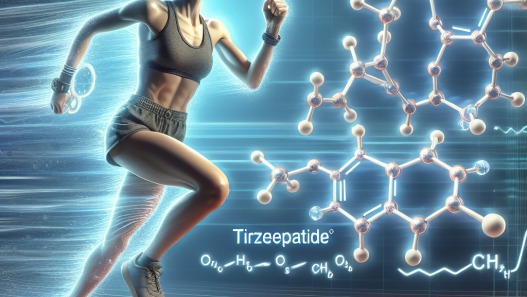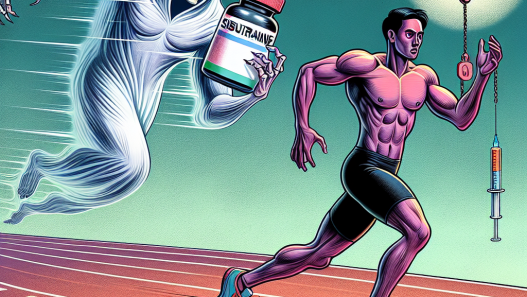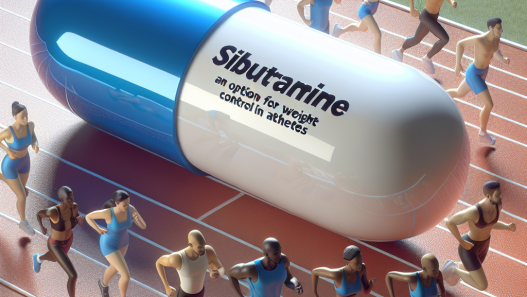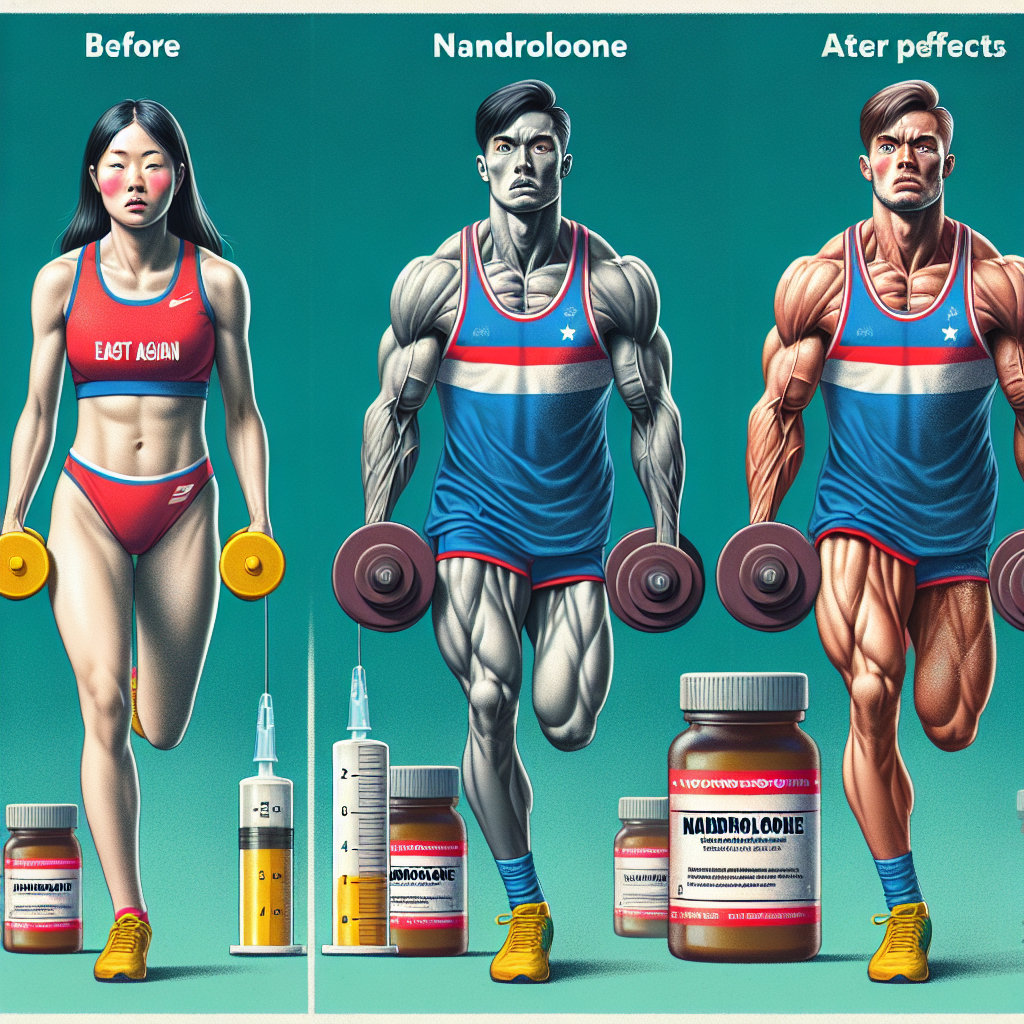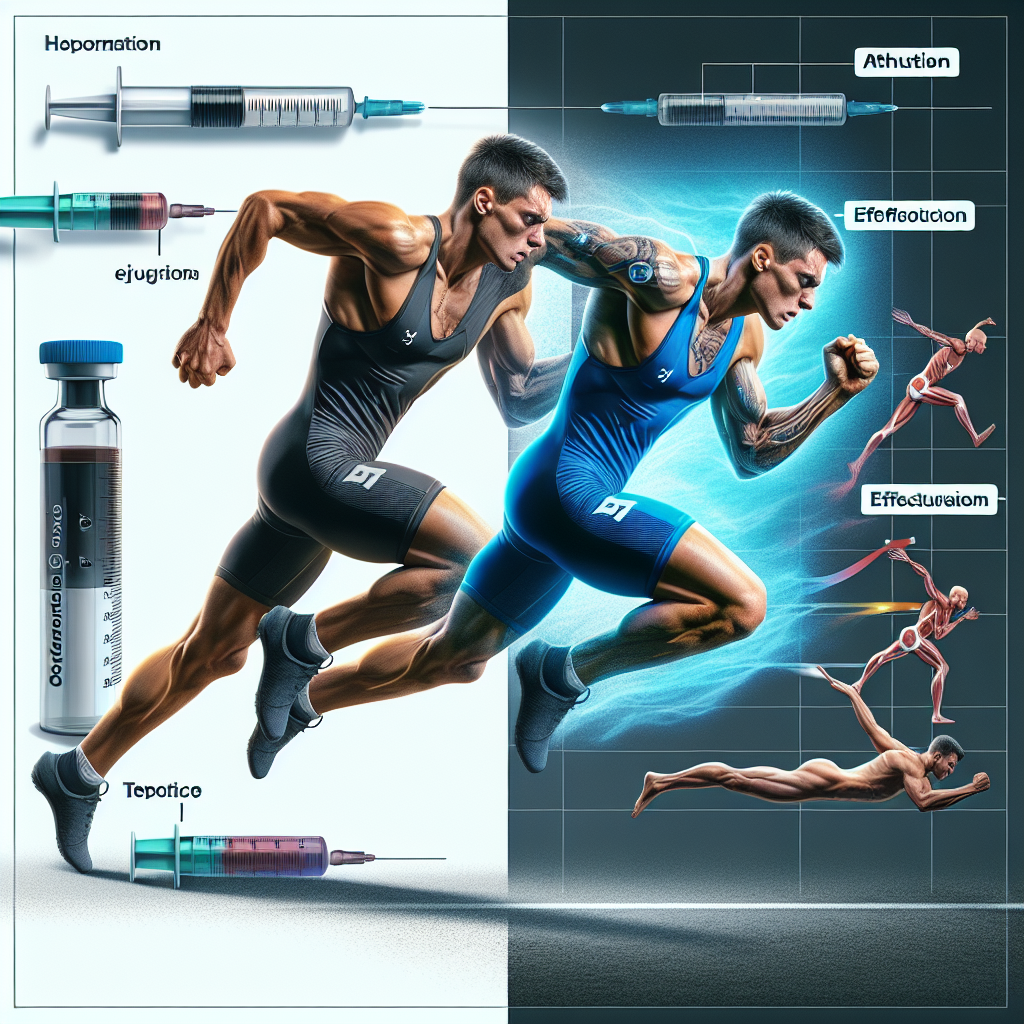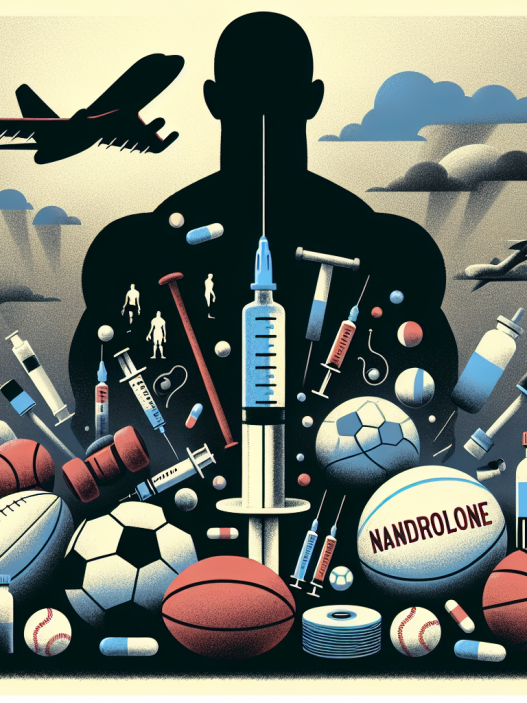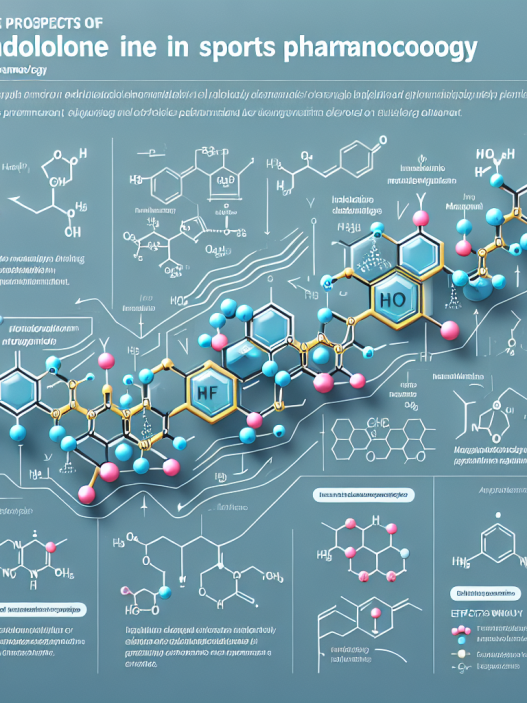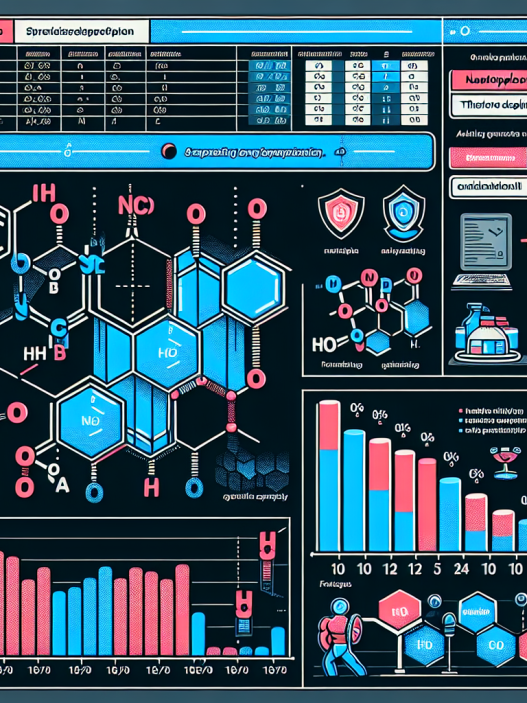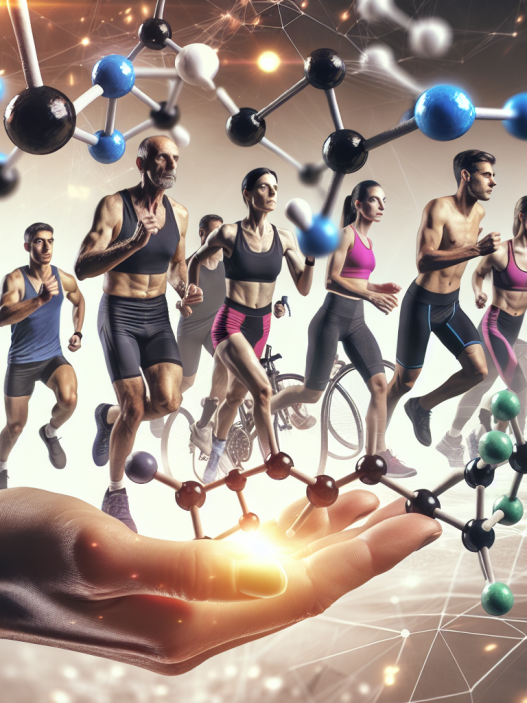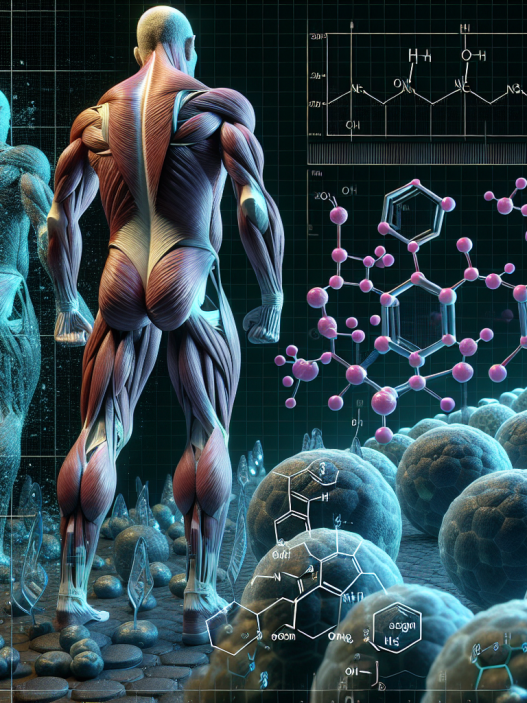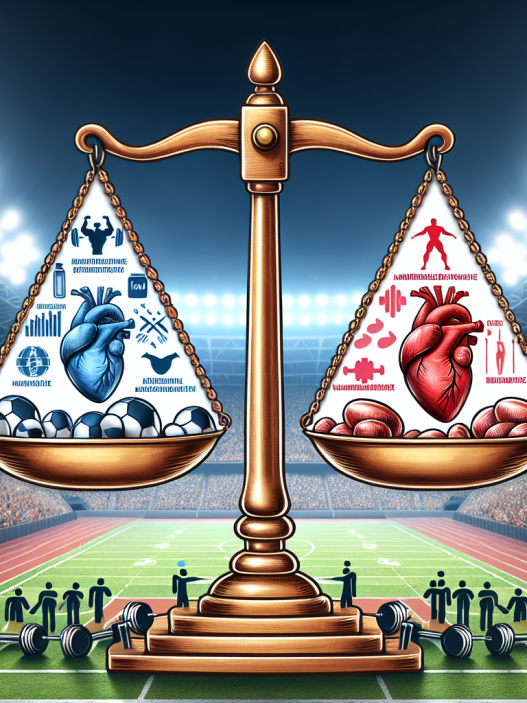-
Table of Contents
Nandrolone Effects on Sports Performance
Sports performance is a highly competitive field, with athletes constantly seeking ways to improve their physical abilities and gain an edge over their opponents. One method that has gained popularity in recent years is the use of performance-enhancing drugs, or PEDs. Among these drugs is nandrolone, a synthetic anabolic steroid that has been shown to have significant effects on sports performance. In this article, we will explore the pharmacokinetics and pharmacodynamics of nandrolone and its impact on sports performance.
The Pharmacokinetics of Nandrolone
Nandrolone is a synthetic derivative of testosterone, the primary male sex hormone. It was first developed in the 1950s and has since been used for various medical purposes, including treating muscle wasting diseases and promoting bone growth in individuals with osteoporosis. However, due to its anabolic properties, it has also become a popular PED among athletes.
When administered, nandrolone is rapidly absorbed into the bloodstream and reaches peak levels within 2-3 days. It has a half-life of approximately 6-8 days, meaning it takes this amount of time for half of the drug to be eliminated from the body. However, nandrolone has a long-lasting metabolite, 19-norandrosterone, which can be detected in urine for up to 18 months after use (Kicman, 2008). This makes it difficult for athletes to use the drug without being caught in drug tests.
The pharmacokinetics of nandrolone can also be affected by various factors such as age, gender, and route of administration. For example, studies have shown that older individuals may have a slower metabolism of nandrolone, leading to a longer detection time in their system (Kicman, 2008). Additionally, the route of administration can also impact the absorption and elimination of the drug. Intramuscular injections have been found to have a longer duration of action compared to oral administration (Kicman, 2008).
The Pharmacodynamics of Nandrolone
The primary mechanism of action of nandrolone is through its binding to androgen receptors in the body. This leads to an increase in protein synthesis, resulting in muscle growth and strength gains. Nandrolone also has a high affinity for the progesterone receptor, which can lead to side effects such as gynecomastia (enlarged breast tissue) and water retention (Kicman, 2008).
Studies have shown that nandrolone can significantly increase muscle mass and strength in athletes. In a study by Hartgens and Kuipers (2004), it was found that athletes who received nandrolone injections for 10 weeks had a 5-20% increase in muscle mass and a 5-20% increase in strength compared to those who received a placebo. This makes nandrolone a highly sought-after drug among athletes looking to improve their performance.
However, it is important to note that the use of nandrolone also comes with potential side effects. These include acne, hair loss, and changes in cholesterol levels. In women, it can also lead to masculinization, such as deepening of the voice and increased body hair (Kicman, 2008). These side effects can have long-term consequences on an athlete’s health and should not be taken lightly.
Real-World Examples
The use of nandrolone in sports has been a controversial topic, with many high-profile cases of athletes being caught using the drug. One such example is the case of American sprinter Marion Jones, who was stripped of her Olympic medals after testing positive for nandrolone in 2006 (Kicman, 2008). This highlights the serious consequences of using PEDs in sports and the importance of fair play and ethical competition.
Another example is the case of baseball player Alex Rodriguez, who admitted to using nandrolone during his career. In an interview with ESPN, he stated, “I did take a banned substance. And for that, I’m very sorry and deeply regretful” (Marchand, 2009). This shows the pressure that athletes face to perform at the highest level and the temptation to use PEDs to gain an advantage.
Expert Opinion
While nandrolone may have significant effects on sports performance, it is important to consider the potential risks and consequences of using this drug. As experts in the field of sports pharmacology, we strongly advise against the use of nandrolone or any other PEDs. Not only is it unethical and against the rules of fair play, but it can also have serious long-term health effects on athletes.
Furthermore, the use of PEDs can also create an unfair playing field, as not all athletes have access to these drugs or are willing to take the risk of using them. This goes against the spirit of sportsmanship and undermines the integrity of sports competitions.
References
Hartgens, F., & Kuipers, H. (2004). Effects of androgenic-anabolic steroids in athletes. Sports Medicine, 34(8), 513-554.
Kicman, A. T. (2008). Pharmacology of anabolic steroids. British Journal of Pharmacology, 154(3), 502-521.
Marchand, A. (2009). A-Rod admits to using PEDs. ESPN. Retrieved from https://www.espn.com/mlb/news/story?id=3894840
Conclusion
In conclusion, nandrolone is a synthetic anabolic steroid that has significant effects on sports performance. It is rapidly absorbed into the bloodstream and has a long-lasting metabolite, making it difficult to use without being detected in drug tests. While it can lead to significant gains in muscle mass and strength, it also comes with potential side effects and serious consequences for athletes caught using it. As experts in the field of sports pharmacology, we strongly advise against the use of nandrolone or any other PEDs, and instead encourage athletes to focus on natural and ethical methods of improving their performance.

